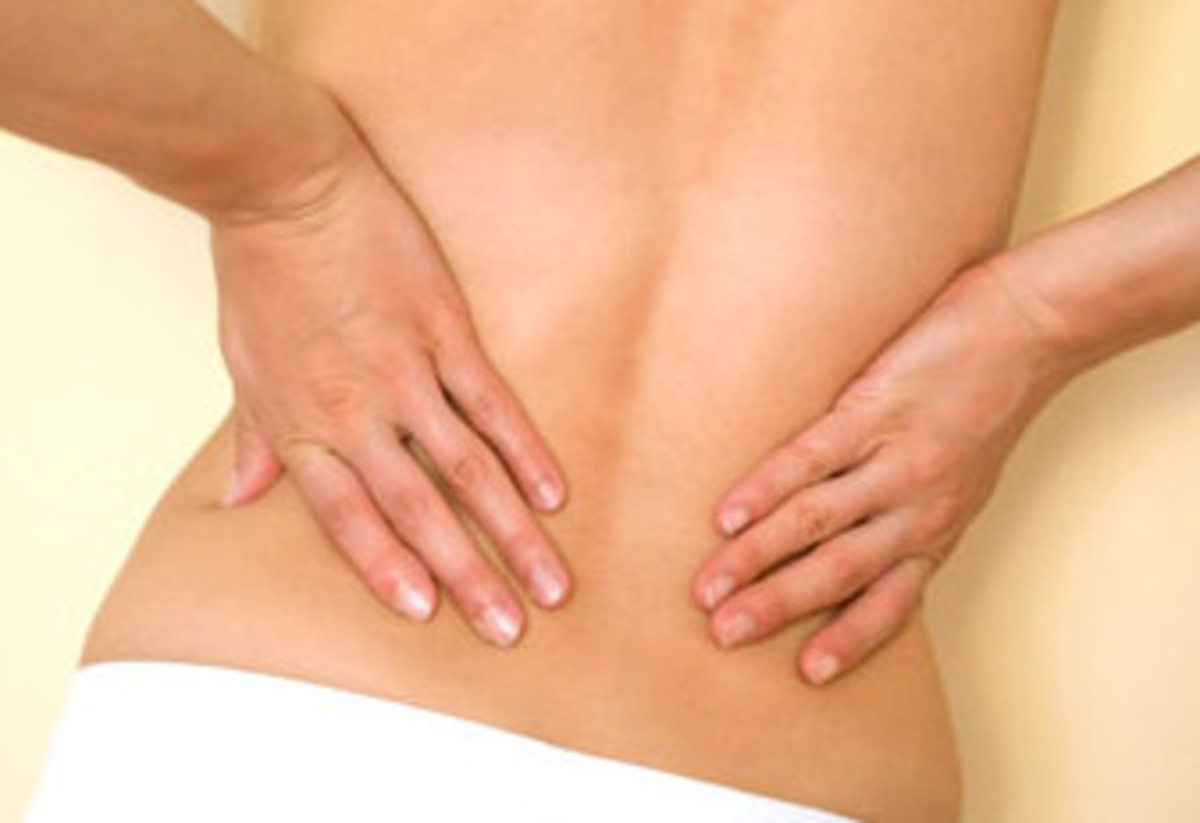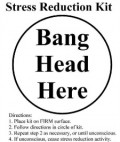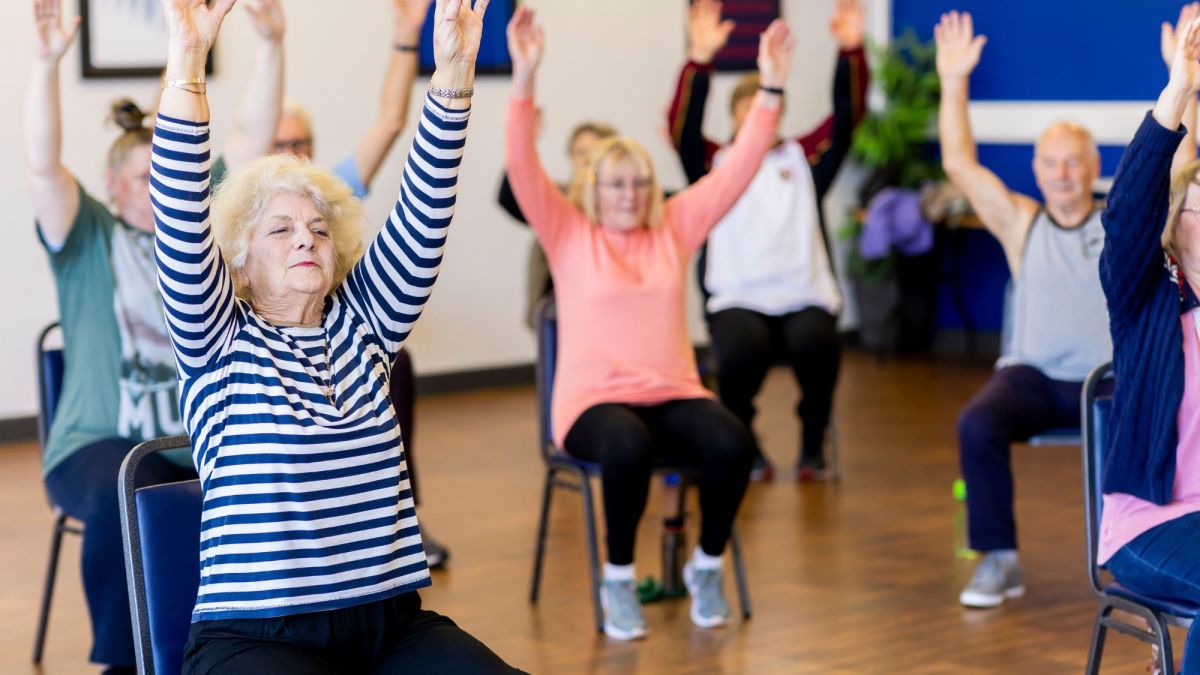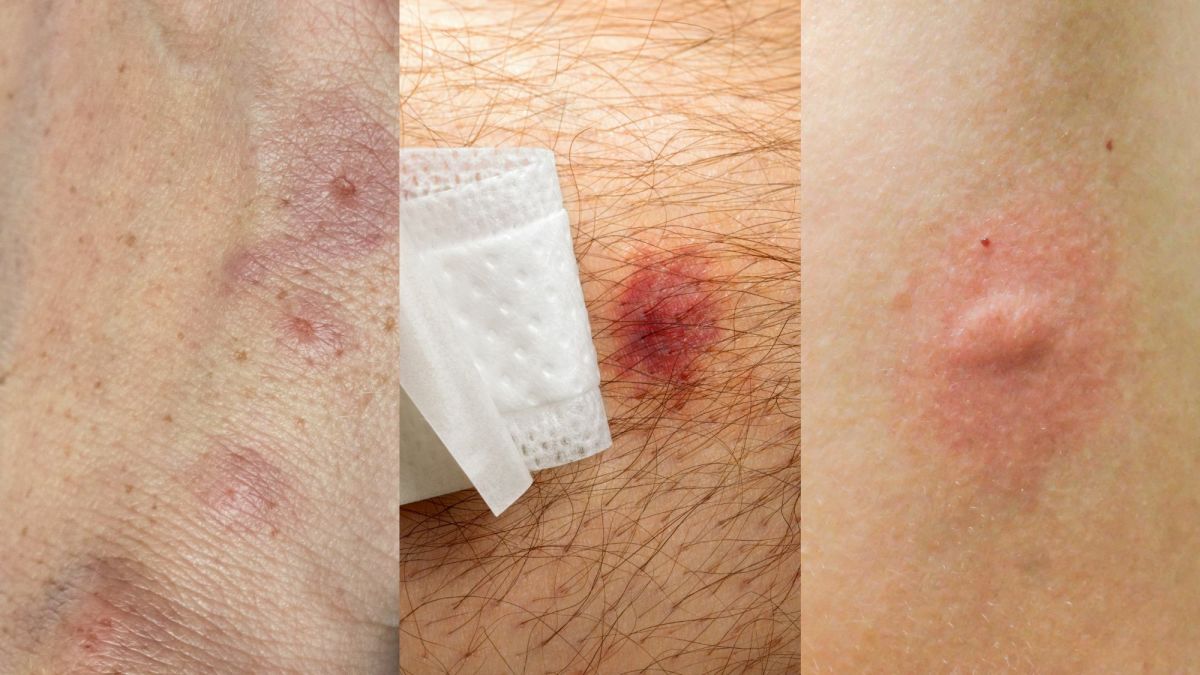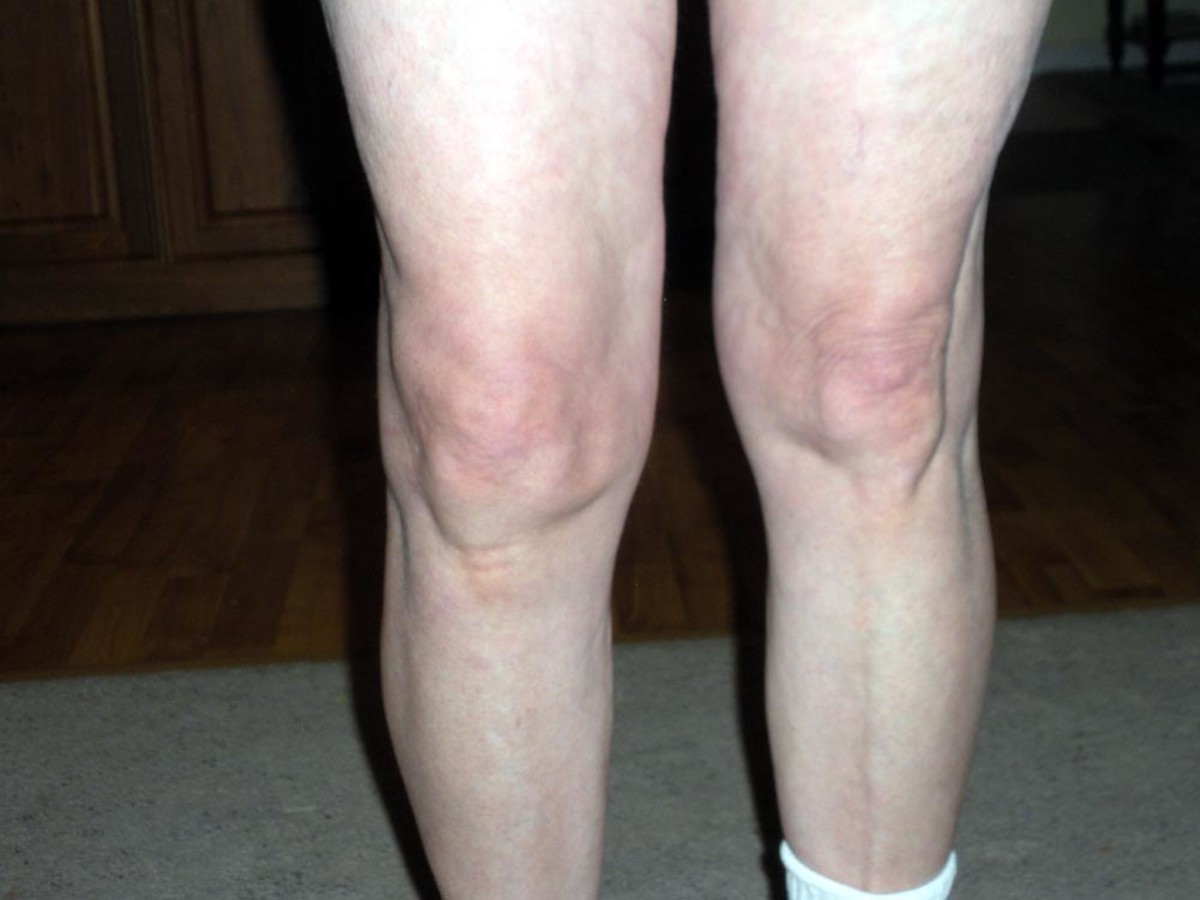Back Pain - How to take care of your back #1 - Physiotherapy Treatment
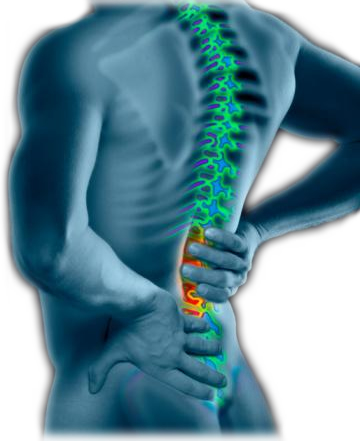
Introduction
Backpain is really common in our society, may be even as common as a cold. But, most of us like to ignore it and this leads to progression and recurrence of attacks. But what many of us are unaware is that, with trivial changes in our daily activities and an alteration of posture, we can prevent and reverse such pains.
If the factors that were responsible for the first episode can be recognized and addressed, its further recurrence can be avoided. The patients must regularly do prescribed exercise programs to maintain the strength and the flexibility of the muscles of the low back and the lower limbs. The exercise program must also aim at maintaining a good posture. But the whole exercise program will be rendered ineffective if the patient does not apply these principles to the activities of daily living such as sitting, standing, lying, lifting etc. In short, one should never misuse or abuse one’s low back. Now let us examine how the activities of daily living may be modified to avoid back pain.
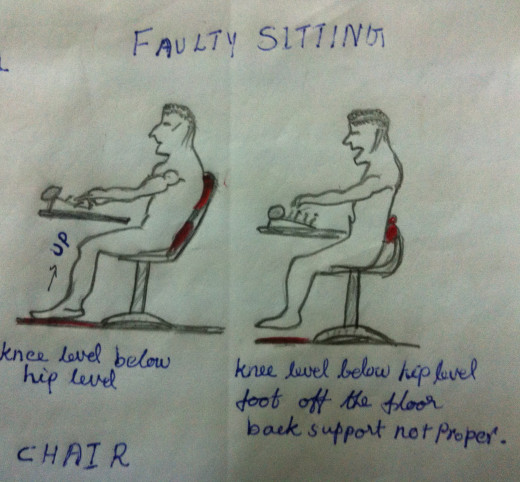
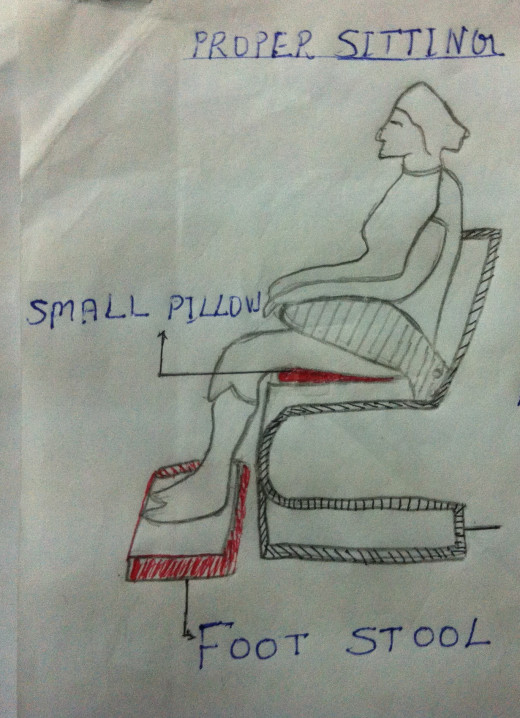
Sitting
I know this sounds little odd but yes, there is a proper way to sit.
The composition of the backbone is not suitable for prolonged sitting.When a person sits for a long time in the same position,it may cause constant and severe strain and stress to the spinal ligaments, spinal muscles,discs and spinal joints. If a person’s occupation demands prolonged sitting, he is advised to change his position by standing or walking at regular intervals.
The chair must be firm and should have a firm back support. While sitting, body weight must be equally distributed on both buttocks and maintain a relaxed posture. The height of the seat of the chair from the floor should be such that while sitting the knees should be approximately at the same level or a higher level than the hips.The width of the seat must be such that it supports the buttocks and the thighs properly,while sitting.The feet must be flat on the floor.If the chair’s seat is too high a footstool may be used.
While sitting scoot your buttocks one or two inches from the back of the chair and then do a pelvic tilt. This will provide a stretch to the low back musculature.The low back may be supported with a small pillow or a folded towel.
Leaning forward for a long time is to be avoided as it causes severe strin to the posterior aspects of the disc which results in it’s weakness.
The chair must have arm support.Use arms for balance only.Do not lean on arms of chair. At times, if the back strains,use arms to support the body.It reduces the pressure on the lower discs by approximately 50 percent.When the arms are kept on the arm support,the upper body may get relaxation.
Do not twist into the chair.When a revolving chair is used the whole body may be turned.
Sit at the edge of the chair and then scoot back into it.The reverse is true for coming to standing.Scoot to the edge of the chair and then get up.Cross your legs for short periods of time only.
While driving sit straight with the backrest supporting the back.The seat and the steering should be adjustable.The position of the steering,the height of the chair and the distance between the steering and the chair must be adjusted suitably.While using a two wheeler sit straight,look forward with the hands straight on the handle.While driving avoid gutters and humps. Try to avoid riding while one has back pain.
While getting into the car,bend hips and knees slightly and lower oneself onto the seat facing the door. Hold the door for help.Bend the hips and the knees further and bring the feet into the car.Using the hands turn the whole body and legs as one unit and now face forward.Never twist the body.To get out of the car the above procedure may be reversed.
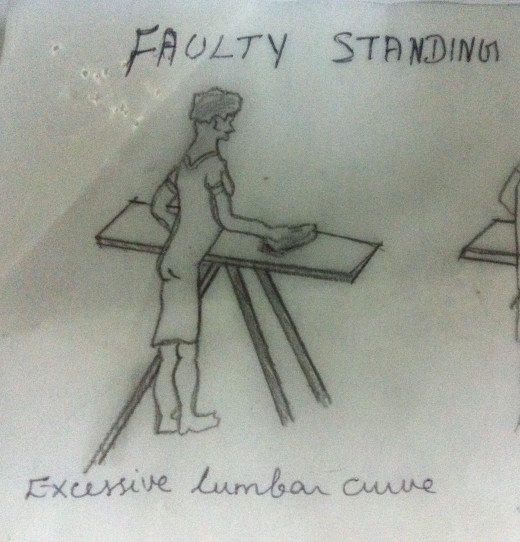
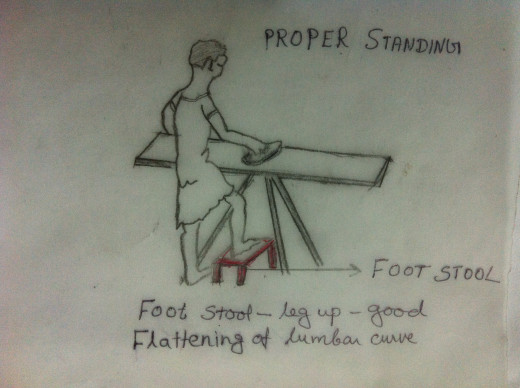
Standing
If there is a proper way to sit, there ought to be the same for standing.
Prolonged standing with excessive lordosis may result in the fatigue of the spinal muscles.This can be avoided by changing the standing posture at regular intervals.It can also be achieved by placing one foot up on a small stool.This enables the hip and the knee of the leg which is kept on the stool flexed.This helps the muscles to be relaxed and the flattening of the curve of the low back.This standing posture is advisable for professionals whose occupation demands prolonged standing such as physiotherapists,dentists etc.
While standing one may be relaxed. Stand preferably on an even surface so that a good standing balance may be achieved.Keep the legs apart so that the centre of gravity of the body falls at a point equidistant from both the feet.This provides stability while standing.Body weight may be evenly distributed on both feet.Shift the body weight from one leg to other leg at intervals by tilting the pelvis.Whenever possible,while standing,lean on something like walls.
Try to avoid footwear with high heels as well as footwear with negative heels.Use footwear with minimum heels
More
So these were some tips on how to prevent or reduce back pain with some trivial changes in how you stand and sit. The next part will include things to note while sleeping and lifting things.
I hope this article was useful for you all. If you have any questions, feel free to post them below or contact me on


